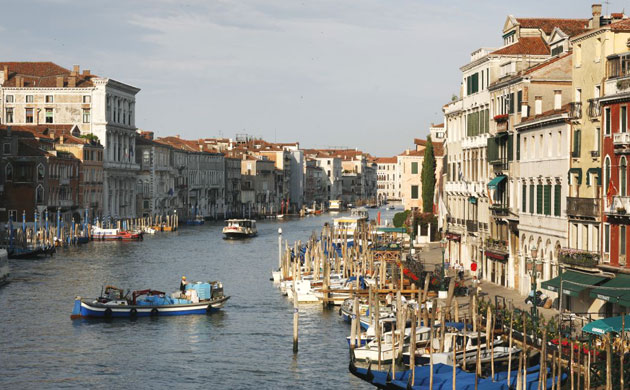http://www.huffingtonpost.com/steven-cohen/president-obama-should-fo_b_707626.html
Green Collar Jobs! are the ish.
The Ivey Vine
Tuesday, September 7, 2010
Wrapping things up at MCG

A quick summary of what the Majora Carter Group is, and why it's amazing:

The Majora Carter Group LLC is a consulting and project-development company focused on unlocking the economic potential of every place. Specializing in green jobs strategy development and community engagement consulting, the Majora Carter Group helps companies and communities successfully explore and establish green economic projects. Majora Carter founded one of the nation’s first and most successful green-collar training and placement systems in 2003, Bronx Environmental Stewardship Training, and following in that vein MCG has begun consulting with clients in the Lower Ninth Ward of New Orleans and in the wetlands of Northeastern North Carolina. In North Carolina, MCG is working with a number of CDCs to pioneer a horticultural job-training curriculum. In New Orleans, through the Make It Right Foundation’s (MIR) Sustainable Infrastructure Project, MCG has created a workforce development strategy that incorporates local citizens into innovative economic systems generated from investment of human and monetary capital in green infrastructure projects.
wow. So much good stuff.

I am writing this with rainbow tears in my eyes. Because my time here with the Majora Carter Group is one day away from being done. Alas, a moment for reflection:

Summer interns this year got to work on 2 fantastic projects; urban farm development in Detroit and wetland restoration in the Chesapeake Bay. With my experience in applied GIS (geographic information system) and wetland mapping in the American South, I put my effort into the wetlands project. Here I helped with a GIS tool proposal for the National Oceanic and Atmospheric Association (NOAA), researching employment markets in the wetlands industry, possible wetland restoration sites, and potential partners for our proposed project. Along with this major task, I also dabbled in researching horticultural infrastructure (which will become a major component of my senior thesis) and worked on this blog.
 In the process I worked with amazing staff (captured in sneaky photos shown), super cool interns, and a Columbia University graduate whose research intent made my re-evaluate my notion of what a "scholar" actually is. I couldn't have had a better summer internship, MCG. :) (and I also really like the fluorescent upholstery and rainbow window dressings)
In the process I worked with amazing staff (captured in sneaky photos shown), super cool interns, and a Columbia University graduate whose research intent made my re-evaluate my notion of what a "scholar" actually is. I couldn't have had a better summer internship, MCG. :) (and I also really like the fluorescent upholstery and rainbow window dressings)
Tuesday, August 10, 2010
Suburbia? done and gone?

Until the mid-twentieth century the suburban environment did not exist. It's new, it's bad, and it's going away? Designed for an elite access to "safer" neighborhoods outside the condensed city, it was seen as an advantageous alternative to crowded inner city life. But, maybe,....it was actually a fail.
Before the emergence of the planned suburban community, towns and cities developed from the natural growth of business and industry. Mixed-used spaces required inhabitants to live, work, and shop/consume in the same space; keeping the economy rich, neighborhoods safe, and maintaining pedestrian access to the entire community. With suburbia, however, single-use pods are attached by a main road-way and smaller feeder streets (if you've read "Suburban Nation: the Rise of Sprawl and the Decline of the American Dream," these single-use pods include residential, shopping, business, municipal, and roadway pods http://tiny.cc/jnw42), isolating business, people, and economic classes. Though not true of all suburban developments, the basic formula for Levitt Town (our classic, suburbia)revolves around this separation of "use". For those of us that grew up in the midst of suburban sprawl, you definitely understand that close, intimate, and loving bond shared with your car. 15 years old, learner's permit. 16 years old, freedom (at least for the state of CA). Here, a car is your only means of access, communication, and economic competition.
But the dog days of suburban supremacy are ending? As revealed in a recent Washington Post article, a new demographic distribution may be developing. In an analysis of 2000-2008 census data by the Brookings Institution, Brookings found that "America's suburbs are now more likely to be home to minorities, the poor and a rapidly growing older population as many younger, educated whites move to cities for jobs shorter commutes." Please see the article for more information: http://www.huffingtonpost.com/2010/05/09/suburbs-losing-young-whit_n_569226.html
Microhousing: Architecture for Really Small People

not.
hahahaha.
A friend forwarded me this AMAZING link on spatially conscious architecture in Japan.
Japanese architects have long delt with spatial constraints on building, but recently (and with the help of new industrial processes and materials technology) they are redefining architecture by inventing entirely new methods to build a "home". Removing all concept of doorways, stairwells, and individual bedrooms and bathrooms, micro-architecture evolves around the use of space; thinking in "3-D" rather than in the classically 2-dimensional plan and section. With this principle in mind, houses can take on any form and require only as much space as occupation requires.
Most importantly, and most environmentally conscious, these new microhouses are finding dynamic ways to exploit natural resources to replace energy consuming electricity. Take for instance, the "Cell Block" house by Yasuhiro Yamashita. The entire facade employs "cross-stitched" steel and glass, to create a checkered shell with maximum natural light intake. Beautiful and inventive design, minimal energy, and requiring only an iota of land....wonderful!
check this ish out: http://www.npr.org/templates/story/story.php?storyId=128953596
...and studies are showing that people are moving away from suburbia, and back into cities. Minimalistic design may be the only design left to consider as urban spaces explode with a growing population. More to come on that.
Thursday, July 29, 2010
Artful Hort Infra cont.

The inspiration behind the MOMA exhibit I viewed a couple a weeks ago,Rising Currents lies in the work of Catherine Seavitt (my junior independent work at Princeton University professor,in the "Mound Builders" studio),Guy Nordenson, and Adam Yarinksy: the book "On the Water: Palisade Bay". The collaborative work of engineers, architects, landscape architects, planners, and students, the book addresses "soft infrastructure" for the New York/New Jersey Upper Bay area. By developing a series of "interconnected infrastructures and landscapes that rethink the thresholds of water, land, and city," the work utilizes climate change and sea level rise as catalysts for reshaping and enriching the bay. Needless to say, it's a very fascinating work that includes horticultural infrastructure.
In updated news, I found out that material from "On the Water: Palisade Bay" will be displayed in The Venice Biennale, a major contemporary art exhibition that occurs every two years in Venice, Italy. It will be a component of the U.S. Pavilion. Quite an honor!

Visit http://www.workshopping.us/?p=74 for more information.
Peace out.
Tuesday, July 20, 2010
how to make a wetland: wetland contractors!

Today in the MCG office research was focused on gathering up the names of wetland contractors in the North Carolina area that specialize in developing, creating, and restoring natural wetlands. I was particularly impressed with Carolina Silvics,Inc. http://tiny.cc/i368t, and Restoration Systems LLC, http://www.restorationsystems.com/, two wetland contracting firms based in North Carolina.
Carolina Silvics, Inc. was founded in 1998 and specializes in ecological restoration and resource management. Their environmental services include:
-Planting plan assistance
-Plant material acquisition
-Invasive species removal and control
-Site preparation and repair
-Wetland/BMP planting, including plugs, live stakes, bare roots, containers, relocated material and B&Bs
-Mechanical and chemical competition control
...and they've worked with major environmental groups including, the United States Air Force, the North Carolina Coastal Foundation, and the North Carolina Ecosystem Enhancement Program.
The other major contractor I found was Restoration Systems, LLC, which focuses on wetland restoration and management in order to offset further industrial development in these regions. Uniquely, this organization restores and protects wetland regions by purchasing a permanent conservation easement or fee-simple interest from property owners, and physically restoring the waterways, trees and vegetation to duplicate natural function and historic condition as closely as possible. And they have an amazing set of pics of current and past restoration projects (http://picasaweb.google.com/restorationsys). They also have a cool blog. Check it out! (http://www.restorationsystems.com/growing-season/).
On a final and less related note, I also found this wetland plant nursery, the Mellow Marsh Farm. (http://www.mellowmarshfarm.com). Such a cute, marshmellowy name! (but actually quite a legitimate wetland resource).
Subscribe to:
Posts (Atom)
